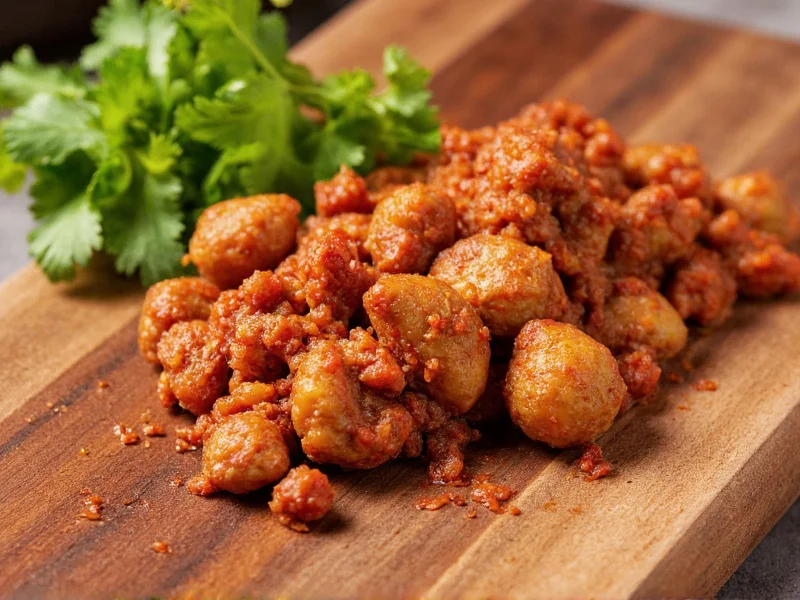Many home cooks and food enthusiasts confuse Creole and Cajun seasonings, assuming they're interchangeable. This misconception stems from their shared Louisiana roots and overlapping ingredients, but the subtle yet significant differences impact dish outcomes substantially. Let's explore what truly separates these two iconic seasoning blends.
Historical Origins: Two Distinct Culinary Traditions
The difference between Creole and Cajun seasoning begins with their historical roots. Creole cuisine developed in urban New Orleans among the cosmopolitan population of French, Spanish, African, and Caribbean influences. This multicultural environment created a more refined, tomato-based cuisine that incorporated European techniques with tropical ingredients.
In contrast, Cajun cuisine originated in rural Acadiana among the Acadian exiles—French Canadians expelled from Nova Scotia in the 18th century. Forced to adapt with limited resources, they developed a "rustic" cooking style focused on available game, seafood, and vegetables, with less emphasis on tomatoes and more on robust spices.
Ingredient Comparison: Breaking Down the Blends
While commercial blends vary by manufacturer, traditional formulations reveal clear patterns. The following table outlines typical ingredients in authentic Creole versus Cajun seasoning:
| Ingredient | Creole Seasoning | Cajun Seasoning |
|---|---|---|
| Paprika | Primary ingredient (sweet or smoked) | Minimal or absent |
| Cayenne Pepper | Moderate (for heat) | Primary heat source (more prominent) |
| Black Pepper | Moderate | Generous |
| Garlic Powder | Standard | Standard |
| Onion Powder | Standard | Standard |
| Oregano | Prominent | Minimal or absent |
| Thyme | Prominent | Minimal or absent |
| Salt | Present | Present |
Flavor Profile Analysis
Understanding the flavor differences between Creole and Cajun seasoning helps determine which to use for specific dishes:
- Cajun seasoning delivers a more aggressive, earthy heat profile with prominent black pepper and cayenne. The flavor is straightforward with less herbal complexity, making it ideal for dishes where you want the spice to stand out.
- Creole seasoning offers a more nuanced, aromatic experience with paprika providing color and subtle sweetness, complemented by Mediterranean herbs. The heat is usually more moderate and balanced.
When to Use Each Seasoning
Choosing between Creole and Cajun seasoning depends on both tradition and practical cooking considerations:
Cajun seasoning works best for:
- Game meats and wild-caught seafood
- Dishes requiring bold, upfront heat (like blackened fish)
- Rural-style stews and one-pot meals
- When you want prominent pepper flavor without herbal notes
Creole seasoning shines in:
- Tomato-based dishes (gumbos, étouffées, sauces)
- Dishes where complexity matters more than intense heat
- Seafood preparations requiring subtle herb notes
- When creating balanced, aromatic flavor profiles
Substitution Guidance for Home Cooks
When you need to substitute one for the other, consider these practical adjustments for authentic Louisiana cooking:
- Replacing Cajun with Creole: Use 1:1 ratio but reduce additional paprika in recipe. Add extra black pepper (¼ teaspoon per tablespoon of seasoning) to compensate for heat difference.
- Replacing Creole with Cajun: Use 1:1 ratio but add ½ teaspoon paprika and ¼ teaspoon each of dried oregano and thyme per tablespoon of seasoning.
- For heat-sensitive dishes: When using Cajun seasoning in a recipe calling for Creole, reduce by 25% and add complementary herbs.
Remember that commercial blends often blur these distinctions. Many "Cajun" seasonings contain paprika, while some "Creole" blends emphasize heat. Always check ingredient lists when purchasing pre-made blends for Louisiana seasoning comparison.
Common Misconceptions Clarified
Several persistent myths confuse the Creole and Cajun seasoning differences:
- Myth: The only difference is heat level.
Reality: While Cajun tends to be hotter, the herb composition (oregano, thyme) and paprika presence define the fundamental difference. - Myth: Creole is just "Cajun with tomatoes."
Reality: The seasoning blends themselves don't contain tomatoes; this confusion comes from Creole cuisine's frequent use of tomato-based sauces. - Myth: The terms are regional—Cajun in country, Creole in city.
Reality: While origins differ, both seasonings are used throughout Louisiana today; the distinction is culinary, not geographical.
Creating Authentic Homemade Blends
For the most accurate Creole and Cajun seasoning comparison, making your own blends ensures proper flavor profiles:
Authentic Cajun Seasoning Recipe:
3 tablespoons black pepper, 2 tablespoons garlic powder, 2 tablespoons onion powder, 1½ tablespoons cayenne pepper, 1 tablespoon dried thyme, 1 tablespoon dried oregano, 1 teaspoon white pepper. Mix thoroughly and store in airtight container.
Authentic Creole Seasoning Recipe:
¼ cup paprika, 2 tablespoons garlic powder, 2 tablespoons onion powder, 1 tablespoon dried oregano, 1 tablespoon dried thyme, 1 tablespoon black pepper, 2 teaspoons cayenne pepper, 2 teaspoons white pepper. Mix thoroughly and store in airtight container.
Notice how the Cajun blend emphasizes pepper varieties while the Creole blend centers on paprika with supporting herbs. This Louisiana spice blend comparison reveals why substitution requires adjustment, not just a 1:1 swap.











 浙公网安备
33010002000092号
浙公网安备
33010002000092号 浙B2-20120091-4
浙B2-20120091-4